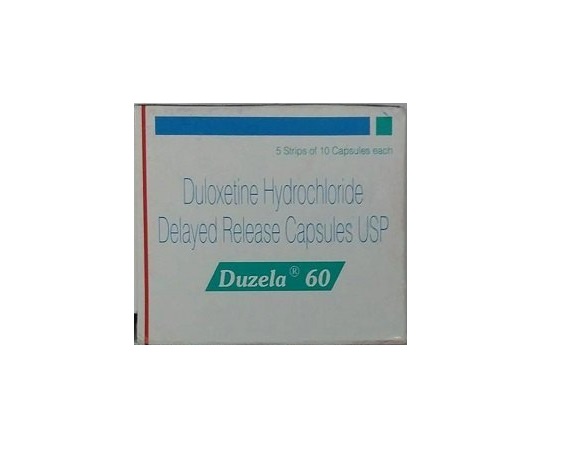What is Cymbalta and how is it used?
Cymbalta is a prescription medicine used to treat symptoms of major depressive disorder, diabetic peripheral neuropathic pain, generalized anxiety disorder, fibromyalgia, and chronic muscle pain. Cymbalta may be used alone or with other medications.
- Cymbalta belongs to a class of drugs called Antidepressants, SNRIs, Fibromyalgia Agents.
- It is not known if Cymbalta is safe and effective in children younger than 7 years of age.
What are the possible side effects of Cymbalta?
Cymbalta may cause serious side effects including:
- pounding heartbeats or fluttering in your chest,
- lightheadedness,
- easy bruising,
- unusual bleeding,
- vision changes,
- painful or difficult urination,
- impotence,
- sexual problems,
- right-sided upper stomach pain,
- itching,
- dark urine,
- yellowing of the skin or eyes (jaundice),
- headache,
- confusion,
- slurred speech,
- severe weakness,
- vomiting,
- loss of coordination,
- feeling unsteady,
- racing thoughts,
- increased energy,
- reckless behavior,
- feeling extremely happy or irritable,
- talking more than usual, and
- severe problems with sleep
Get medical help right away, if you have any of the symptoms listed above.
The most common side effects of Cymbalta include:
- drowsiness,
- nausea,
- constipation,
- loss of appetite,
- dry mouth, and
- increased sweating
Tell the doctor if you have any side effect that bothers you or that does not go away.
INDICATIONS
CYMBALTA® is indicated for the treatment of:
- Major depressive disorder in adults
- Generalized anxiety disorder in adults and pediatric patients 7 years of age and older
- Diabetic peripheral neuropathic pain in adults
- Fibromyalgia in adults and pediatric patients 13 years of age and older
- hronic musculoskeletal pain in adults
DOSAGE AND ADMINISTRATION
Important Administration Instructions
Administer CYMBALTA orally (with or without meals) and swallow whole. Do not chew or crush, and do not open the delayed-release capsule and sprinkle its contents on food or mix with liquids because these actions might affect the enteric coating. If a dose of CYMBALTA is missed, take the missed dose as soon as it is remembered. If it is almost time for the next dose, skip the missed dose and take the next dose at the regular time. Do not take two doses of CYMBALTA at the same time.
Dosage For Treatment Of Major Depressive Disorder In Adults
The recommended starting dosage in adults with MDD is 40 mg/day (given as 20 mg twice daily) to 60 mg/day (given either once daily or as 30 mg twice daily). For some patients, it may be desirable to start at 30 mg once daily for 1 week, to allow patients to adjust to CYMBALTA before increasing to 60 mg once daily. While a 120 mg/day dose was shown to be effective, there is no evidence that doses greater than 60 mg/day confer any additional benefits. Periodically reassess to determine the need for maintenance treatment and the appropriate dosage for such treatment.
Dosage For Treatment Of Generalized Anxiety Disorder
Recommended Dosage In Adults Less Than 65 Years Of Age
For most adults less than 65 years of age with GAD, initiate CYMBALTA 60 mg once daily. For some patients, it may be desirable to start at 30 mg once daily for 1 week, to allow patients to adjust to CYMBALTA before increasing to 60 mg once daily. While a 120 mg once daily dosage was shown to be effective, there is no evidence that doses greater than 60 mg/day confer additional benefit. Nevertheless, if a decision is made to increase the dosage beyond 60 mg once daily, increase dosage in increments of 30 mg once daily. Periodically reassess to determine the continued need for maintenance treatment and the appropriate dosage for such treatment.
Recommended Dosage In Geriatric Patients
In geriatric patients with GAD, initiate CYMBALTA at a dosage of 30 mg once daily for 2 weeks before considering an increase to the target dose of 60 mg/day. Thereafter, patients may benefit from doses above 60 mg once daily. If a decision is made to increase the dose beyond 60 mg once daily, increase dose in increments of 30 mg once daily. The maximum dose studied was 120 mg per day.
Recommended Dosage In Pediatric Patients 7 To 17 Years Of Age
Initiate CYMBALTA in pediatric patients 7 to 17 years of age with GAD at a dosage of 30 mg once daily for 2 weeks before considering an increase to 60 mg once daily. The recommended dosage range is 30 to 60 mg once daily. Some patients may benefit from dosages above 60 mg once daily. If a decision is made to increase the dose beyond 60 mg once daily, increase dosage in increments of 30 mg once daily. The maximum dose studied was 120 mg per day.
Dosage For Treatment Of Diabetic Peripheral Neuropathic Pain In Adults
Administer 60 mg once daily in adults with diabetic peripheral neuropathic pain. There is no evidence that doses higher than 60 mg once daily confer additional significant benefit and the higher dosage is clearly less well tolerated. For patients for whom tolerability is a concern, a lower starting dose may be considered.
Since diabetes is frequently complicated by renal disease, consider a lower starting dosage and gradual increase in dosage for patients with renal impairment .
Dosage For Treatment Of Fibromyalgia
Recommended Dosage In Adults
The recommended CYMBALTA dosage is 60 mg once daily in adults with fibromyalgia. Begin treatment at 30 mg once daily for 1 week, to allow patients to adjust to CYMBALTA before increasing to 60 mg once daily. Some patients may respond to the starting dosage. There is no evidence that dosages greater than 60 mg/day confer additional benefit, even in patients who do not respond to a 60 mg/day dosage, and higher dosages were associated with a higher rate of adverse reactions.
Recommended Dosage In Pediatric Patients 13 To 17 Years Of Age
The recommended starting CYMBALTA dosage in pediatric patients 13-17 years of age with fibromyalgia is 30 mg once daily. The dosage may be increased to 60 mg once daily based on response and tolerability.
Dosage For Treatment Of Chronic Musculoskeletal Pain In Adults
The recommended CYMBALTA dosage is 60 mg once daily in adults with chronic musculoskeletal pain. Begin treatment at 30 mg once daily for one week, to allow patients to adjust to CYMBALTA before increasing to 60 mg once daily. There is no evidence that higher dosages confer additional benefit, even in patients who do not respond to a 60 mg once daily dosage, and higher dosages are associated with a higher rate of adverse reactions .
Dosage In Patients With Hepatic Impairment Or Severe Renal Impairment
Avoid use in patients with chronic liver disease or cirrhosis.
Avoid use in patients with severe renal impairment, GFR <30 mL/minute .
Discontinuing CYMBALTA
Adverse reactions after discontinuation of CYMBALTA, after abrupt or tapered discontinuation, include: dizziness, headache, nausea, diarrhea, paresthesia, irritability, vomiting, insomnia, anxiety, hyperhidrosis, and fatigue. A gradual reduction in dosage rather than abrupt cessation is recommended whenever possible [see WARNINGS AND PRECAUTIONS].
Switching A Patient To Or From A Monoamine Oxidase Inhibitor (MAOI) Intended To Treat PsychiatricDisorders
At least 14 days should elapse between discontinuation of an MAOI intended to treat psychiatric disorders and initiation of therapy with CYMBALTA. Conversely, at least 5 days should be allowed after stopping CYMBALTA before starting an MAOI intended to treat psychiatric disorders .
Use Of CYMBALTA With Other MAOIs Such As Linezolid Or Methylene Blue
Do not start CYMBALTA in a patient who is being treated with linezolid or intravenous methylene blue because there is an increased risk of serotonin syndrome. In a patient who requires more urgent treatment of a psychiatric condition, other interventions, including hospitalization, should be considered [see CONTRAINDICATIONS].
In some cases, a patient already receiving CYMBALTA therapy may require urgent treatment with linezolid or intravenous methylene blue. If acceptable alternatives to linezolid or intravenous methylene blue treatment are not available and the potential benefits of linezolid or intravenous methylene blue treatment are judged to outweigh the risks of serotonin syndrome in a particular patient, CYMBALTA should be stopped promptly, and linezolid or intravenous methylene blue can be administered. The patient should be monitored for symptoms of serotonin syndrome for 5 days or until 24 hours after the last dose of linezolid or intravenous methylene blue, whichever comes first. Therapy with CYMBALTA may be resumed 24 hours after the last dose of linezolid or intravenous methylene blue .
The risk of administering methylene blue by non-intravenous routes (such as oral tablets or by local injection) or in intravenous doses much lower than 1 mg/kg with CYMBALTA is unclear. The clinician should, nevertheless, be aware of the possibility of emergent symptoms of serotonin syndrome with such use.
SIDE EFFECTS
The following serious adverse reactions are described below and elsewhere in the labeling:
- Suicidal Thoughts and Behaviors in Children, Adolescents, and Young Adults
- Hepatotoxicity
- Orthostatic Hypotension, Falls and Syncope
- Serotonin Syndrome
- Increased Risk of Bleeding
- Severe Skin Reactions
- Discontinuation Syndrome
- Activation of Mania/Hypomania
- Angle-Closure Glaucoma
- Seizures
- Increases in Blood Pressure
- Clinically Important Drug Interactions
- Hyponatremia
- Urinary Hesitation and Retention
- Sexual Dysfunction
Clinical Trials Experience
Because clinical trials are conducted under widely varying conditions, adverse reaction rates observed in the clinical trials of a drug cannot be directly compared to rates in the clinical trials of another drug and may not reflect the rates observed in practice.
The stated frequencies of adverse reactions represent the proportion of patients who experienced, at least once, one treatment-emergent adverse reaction of the type listed. A reaction was considered treatment-emergent if it occurred for the first time or worsened while receiving therapy following baseline evaluation.








Reviews
There are no reviews yet.